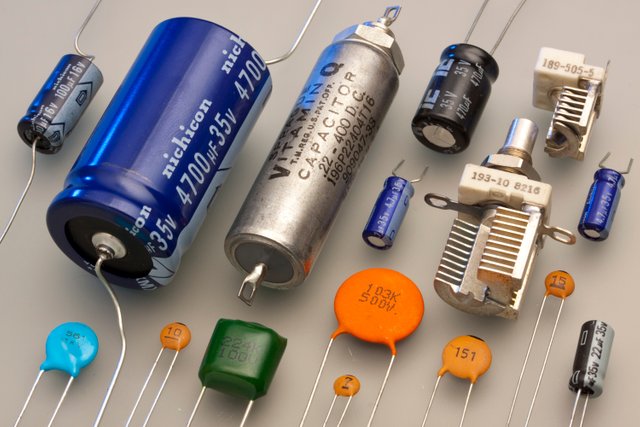Capacitors AND Types

There are different types of capacitors available in the market. The key factor in distinguishing different types of capacitors is the Dielectric used in its construction. Some of the common capacitor types are ceramic, electrolytic (which include Aluminium capacitors, Tantalum capacitors and Niobium capacitors), plastic film, paper and mica
Each capacitor type has its own advantages and disadvantages. The characteristics and areas of applications may vary from one capacitor to other. Hence, when choosing a capacitor, following few of many factors must be considered.
Size: Both the physical dimension and the value of the capacitance is important.
Working Voltage: It is an important characteristic of the capacitor. It specifies the maximum voltage that can be applied across the capacitor.
Leakage Current: A small amount of current will flow through dielectric as they are not the perfect insulators. This is called leakage current.
Equivalent series resistance: The terminals of the capacitor have a small amount of resistance (usually less than 0.1Ω). This resistance becomes a problem when the capacitor used at high frequencies.
These factors determine how and in what applications a particular type of capacitor can be used. For example, the rated voltage of an electrolytic capacitor is larger when compared to a ceramic capacitor in the similar capacitance range.
So they are generally used in power supply circuits. Similarly, some capacitors have very low leakage current and others have very high leakage current. Depending on the application, appropriate capacitor should be chosen.
Dielectrics in Capacitors
Fixed capacitors are more common types of capacitors. It is difficult to find an electronic circuit without a capacitor. Most of the capacitors are named after the dielectric used in the construction. Some of the common dielectrics used in the construction of capacitors are:
Ceramic
Paper
Plastic film
Mica
Glass
Aluminium Oxide
Tantalum Pentoxide
Niobium Pentoxide
The last three are used in electrolytic capacitors. Despite the use of different kinds of dielectrics in the construction of capacitors, the functionality of the capacitor doesn’t change: to store energy in the form of electric charge between the parallel plates.
great information
Upvoted with 98.47% by @randofish
Thanks
This post has received a 1.75% UpGoat from @shares. Send at least 0.1 SBD to @shares with a post link in the memo field.
To support our daily curation initiative, please donate 1 SBD or delegate Steem Power (SP) to @shares by clicking one fo the following links: 10 SP, 50 SP, 100 SP, 500 SP, 1000 SP, 5000 SP.
Support my owner. Please vote @Yehey as Witness - simply click and vote.
This post has received a 0.33 % upvote from @morwhale thanks to: @sadiq689.